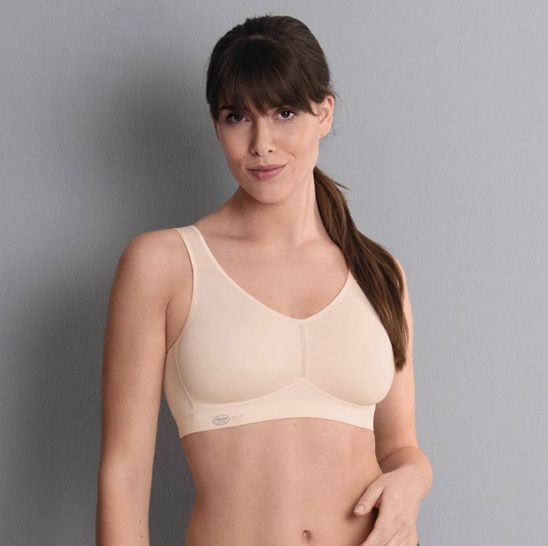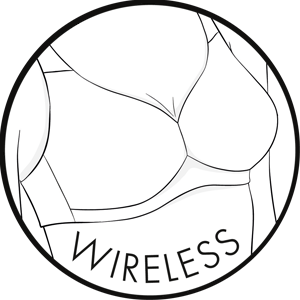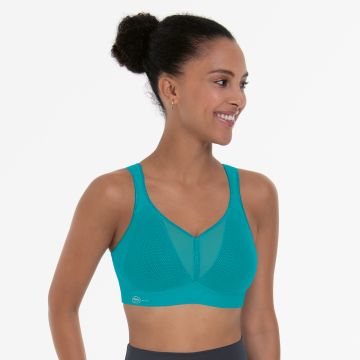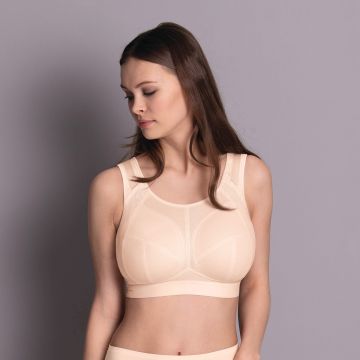Selecting the Perfect Supportive Sports Bra for Your Activity Level
![[Translate to English US:]](https://www.anita.com/cms//fileadmin/_processed_/e/f/csm_Header_Selecting_the_Perfect_Supportive_Sports_Bra_for_Your_Activity_Level_4f5291155c.png)
When it comes to pursuing an active lifestyle, one of the most crucial aspects that often gets overlooked is choosing the right sports bra. Whether you're hitting the gym, going for a run, practicing yoga, or engaging in any physical activity, a well-fitting and supportive and adjustable sports bra can make all the difference in your comfort, performance, and overall experience.
In this guide, we'll walk you through the key factors to consider when picking out the perfect sports bra for your chosen activity.
Understanding the Importance of a Supportive Sports Bra
Before diving into the specifics of selecting the ideal sports bra, it's important to grasp why having the right one matters. Engaging in physical activities, especially those that involve movement and impact, can cause strain on the breast tissue and ligaments.
A supportive sports bra minimizes this strain by providing the necessary support and minimizing breast movement. This not only enhances comfort but also reduces the risk of long-term damage and discomfort.
Step 1: Determine Your Activity Level
Different activities require different levels of support. The first step in selecting the perfect sports bra is to identify the intensity of your chosen activity. Are you engaging in high-impact activities like running or aerobics, or is it a low-impact activity such as yoga or pilates? Determining the activity level will help you narrow down the type of sports bra that suits your needs.
Step 2: Choose the Right Style
Sports bras come in various styles, each designed to cater to different preferences and needs. The three main categories are compression bras, encapsulation bras, and hybrid bras.
Compression Bras: Ideal for low-impact activities, compression bras press the breasts against the chest wall, providing even support. They are suitable for activities like yoga, walking, and light stretching.
Encapsulation Bras: These bras have separate cups for each breast, similar to traditional bras. They offer a more natural shape and are suitable for medium-impact activities like cycling and skiing.
Hybrid Bras: Combining features of both compression and encapsulation bras, hybrid bras are versatile and can accommodate a range of activities, making them suitable for those who enjoy a mix of exercises. Here at Anita Active, we always focus on adding both compression and encapsulation to our sports bras to give you the best support possible!
Step 3: Focus on Support and Fit
The foundation of a supportive sports bra lies in its fit. Pay careful attention to the band and straps.
Band: The band provides the majority of the support. It should fit snugly around your ribcage without digging in or riding up. Make sure you can insert two fingers under the band comfortably.
Straps: Adjustable straps are essential to achieve a customized fit. They should not dig into your shoulders or slip off during activity.
Step 4: Consider Material and Breathability
The material of the sports bra plays a significant role in your comfort. Look for moisture-wicking fabrics that keep you dry and comfortable during your workout. Additionally, consider bras with mesh panels for enhanced breathability, especially if you're engaging in high-intensity activities.
Step 5: Don't Forget About Comfort
Comfort is key when selecting a sports bra. Opt for bras with soft seams and minimal hardware to prevent chafing. Additionally, a seamless sports bra can provide a smooth and irritation-free experience.
Step 6: Get the Right Size
Perhaps the most crucial aspect of choosing a sports bra is ensuring you're wearing the correct size. Our bodies change over time, so it's recommended to get measured regularly. A well-fitting sports bra should encapsulate your breasts fully, without any spillage or gaps.
At Anita Active, we put comfort at the forefront and that means finding the right size. Many women do not know they are wearing the wrong bra size for them, which can lead to rubbing, chafing, and inadequate support during physical activity. Here’s how to find the right size:
Measure Your Band Size:
Start by measuring around your ribcage, just under your bust, using a soft measuring tape. Make sure the tape is snug but not tight. This measurement will determine your band size. If it's an odd number, round up to the nearest even number and for our sports bras, choose one band size higher, so if you measure 35 inches, round up to 36 inches and use one band size higher than that, so 38.
Measure Your Bust Size:
Measure around the fullest part of your bust while wearing a non-padded bra. Again, use a soft measuring tape and make sure it's not too tight.
Calculate Cup Size:
Subtract your underbust measurement (after rounding up) from your bust measurement. The difference will determine your cup size:
- 0" difference: AA cup
- 1" difference: A cup
- 2" difference: B cup
- 3" difference: C cup
- 4" difference: D cup
- 5" difference: DD or E cup
- 6" difference: DDD or F cup
- And so on…
Combining Band and Cup Size:
Put together your band size and cup size to determine your sports bra size. For example, if you measured your underbust with 33 inches, you round up to 34 inches and your band size will be 36. If you measured your bust with 37 inches, it is a 3 inch difference, so your cup size is C, and your sports bra size would be 36C.
Our bra size calculator can help you do the math and find your right size for you.
However, keep in mind that measuring your bra size is not an accurate science but only a starting point as everyone’s body and breasts are different and cannot always be put into numbers.
Adjustable Features:
Look for sports bras with adjustable straps and closures. This allows you to fine-tune the fit to your comfort. We find that adjustable sports bras provide the best degree of personalized comfort.
Regular Reassessment:
As your body changes over time, your bra size may also change. It's recommended to measure yourself periodically to ensure you're still wearing the right size. Our bra size calculator can help you keep tabs on any changes.
Step 7: Test for Support
Before committing to a sports bra, it's a good idea to do a quick test. Jump, jog, and move around in the fitting room to ensure the bra provides the necessary support without causing discomfort or excessive movement.
Step 8: Replace When Needed
Sports bras, like any other activewear, have a lifespan. Over time, the elasticity of the fabric and the support it provides can diminish. Keep an eye out for signs of wear and replace your sports bras as needed to ensure optimal support and comfort.
Selecting the perfect supportive sports bra is a process that involves considering your activity level, fit, style, and material. By focusing on these factors, you can ensure a comfortable and enjoyable workout experience while minimizing the risk of discomfort or injury.
Remember, a high-quality sports bra not only enhances your performance but also contributes to your long-term breast health.
If you're ready to take your active lifestyle to the next level, invest in a reliable, adjustable sports bra that meets your unique needs and preferences. Check out our entire Anita Active collection of sports bras that offer different materials, styles, sizing, and features. You’ll find one that is perfect for your specific needs!
Anita active
Sizes: 30-42
Cups: AA-H
Comments:
No Comments






